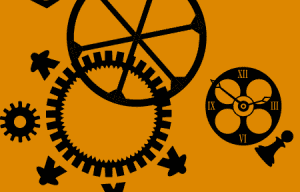
“That movie sure has stood the test of time!” I’m sure you have heard a statement using that phrase “stood the test of time”.
IS THE PASSING OF TIME A VALID TEST OF VALUE?
The English poet Percy Bysshe Shelly upon seeing the ruins of a statue in the sands of Egypt was inspired to write the following poem:
Who said: “Two vast and trunkless legs of stone
Stand in the desert. Near them, on the sand,
Half sunk, a shattered visage lies, whose frown,
And wrinkled lip, and sneer of cold command,
Tell that its sculptor well those passions read
Which yet survive, stamped on these lifeless things,
The hand that mocked them and the heart that fed:
And on the pedestal these words appear:
‘My name is Ozymandias, king of kings:
Look on my works, ye Mighty, and despair!’
Nothing beside remains. Round the decay
Of that colossal wreck, boundless and bare
The lone and level sands stretch far away.”
It is believed by scholars that Ozymandias was an alternate name for Ramesses II. This ruler of Egypt felt his accomplishments would stand the tests of time and he would be remembered as the greatest ruler to have lived. The statue in ruins testifies to the failure to pass that test.
Are there game designs that have passed the test of time? Are there lessons for modern day game designers to learn from designs that have stood the test of time?
SENET
One of the oldest known board games, Senet, has been found in Egyptian burials dating back to 3500 BC to 3100 BC.
The Senet game set had become a sort of talisman for the journey of the dead.
Because of the Egyptian belief in determinsism and the element of luck in the game of Senet, it was believed that a successful player was under the protection of the pantheon of gods Ra, Thoth & Osiris.
Therefore, Senet boards were placed in the grave along side of other useful objects for the dangerous journey through the afterlife.
Although historians have made educated guesses, the actual rules of the game are a topic of some debate. Senet historians Timothy Kendall and R.C. Bell have each proposed their own sets of rules. These rules have been adopted by different companies which make the Senet sets you can buy today. According to BoardGameGeek a version of Senet has been published as recently as 2013.
SENET COMPONENTS AND RULES
A Senet board has two sets of pawns. The game board has a grid of squares which are arranged in three rows.
A Senet board consists of three rows of ten squares set in a rectangle. In one corner, the square that is assumed to be the final square has a single stroke, the next one along in the row, two strokes, the next one three strokes, the next a diagonal cross and the fifth one along a symbol with a circle and cross.
It is assumed that these were squares 26 to 30 of a 30 square track that started in the opposite corner, went along one row, travelled back down the middle row and finished along the row ending in these special squares. Square 15 also often contained a symbol and was called the House of Rebirth while square 26 with a cross and circle symbol is known as the House of Happiness and square 27 with the cross is known as the House of Water. The movements of the pieces are determined by the throw of four split twigs with a dark face on one side and a light face on the other and have these results:
- 0 light faces up – 5 and an extra throw
- 1 light face up – 1 and an extra throw
- 2 light faces up 2
- 3 light faces up 3
- 4 light faces up 4 and an extra throw
A square can only be occupied by one piece at a time. If no pieces can move, the turn is passed. If a piece lands on an opposing piece, the opposing piece is moved back to the square that the attacking piece started the move from. The House of Happiness cannot be passed over. Every piece must land upon it before preceding onward. The House of Water is to be avoided – when a piece lands on this square, the piece is returned to the House of Rebirth. Pieces can only move off the final three squares by throwing the number indicated on the square. The first player to move all pieces off the board wins.
GAME MECHANICS FROM ANCIENT EGYPT WE STILL USE
POINT-TO-POINT-MOVEMENT
Tabletop games which use point-to-point movement, often have spots that can be occupied by markers or figurines, perhaps the spots representing ports & forts on a map. These points are connected by lines, and movement can only happen along these lines. Just because the two points are next to or close to each other in itself does not allow movement between the spots if there is no connecting line between them. With point-to-point movement, you do not have a division of the board into areas which can be moved out of or into freely (like with Axis & Allies). Neither do you have a board completely covered in squares (like with Chess) or hexagons that allow unrestricted or nearly unrestricted movement in any direction and to any square or hex.
Unlike area control designs, point-to-point movement arbitrarily restricts areas on the board that markers or figurines can occupy, as well as restricts the ways that these points may be reached which can result in interesting strategies.
Moving your pawns in Senet through three rows of ten squares in a snakelike pattern and being restricted from landing on certain squares or initiating a certain action by landing on a particular square can be called Point-to-Point Movement.
ROLLING DICE / SPINNER
Games where players roll dice or spin spinners and move playing pieces in accordance with the roll are often thought of as not having any strategy involved. Backgammon is sometimes included in this category; however, it does contain tactical elements.
Determining how many squares to move a pawn by throwing of four split twigs with a dark face on one side and a light face on the other would qualify as Rolling/Spinner game mechanic.
CAPTURING OPPONENT PIECES
Capturing Opponent Pieces happens in today’s games like Chess, Checkers, Backgammon and Mancala. In some cases, captured pieces are kept by the capturing player and in some cases the captured pieces are returned to a particular position on the board as we saw in Senet – the opposing piece is moved back to the square that the attacking piece started the move from.
BONUS TURNS
Senet had bonus turns for certain rolls. …throw of four split twigs with a dark face on one side and a light face on the other. If you throw four split twigs with a results of a 0, 1, or 4, you get an extra throw. Many modern games have this idea that you can earn an extra turn through luck or expert play. Alhambra lets you take an extra turn if you buy a building with the exact amount, for example. Monopoly lets you go again if you roll doubles.
The fact that these designs having been used for centuries and no longer thought of as game mechanics does not alter the fact that they were once original concepts of game design.
—
Which of today’s games will stand the test of time?
What aspects of today’s games will last, and which will be forgotten?








